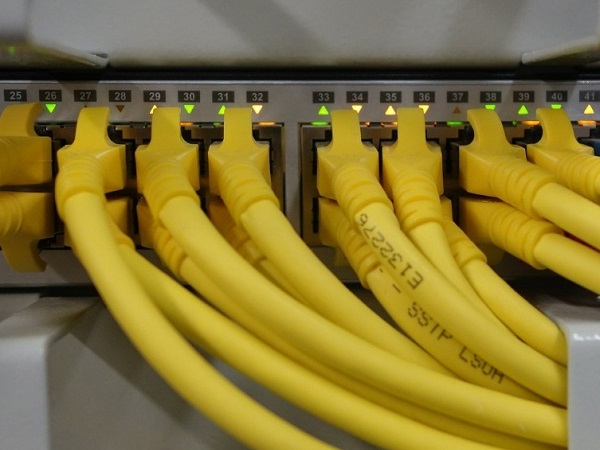Several different types of ethernet cables are available. The three most common ones are Cat5e, Cat6a, and the more expensive Cat7. Each has their pros and cons. Learn about these cables and the pros and cons of each. Ultimately, you’ll be more likely to make a wise purchasing decision.
Listed below are a few tips to make your decision easier. Then, go out and purchase a cable!
Cat5e
While Cat5e ethernet cables are not as fast as the higher-end Cat6 and Cat8 versions, they do offer a better price and are easier to find. The difference between the two is not huge, but you should choose the better-quality cable if you’re trying to transfer data at high speeds. For most uses, Cat5e is fine. It can support speeds of up to a thousand Mbps which is very good in this current market of bandwidth.
Both CAT5e and CAT6 cables are highly compatible and can handle speeds of up to 1,000 Mbps. This is more than twice the speed of the lower-end CAT5e. The difference lies in the operating frequencies. Cat6 cables operate at 250 MHz, while CAT5e cables operate at 100 MHz. As a result, they can process more data than their lower-end counterparts.
For an understanding of the difference between Cat5 and Cat5e ethernet cables, it is helpful to understand the data transfer. Ethernet cables, such as the ones used in business settings, can transmit data at speeds of up to 1 Gigabit per second. Both cables terminate with a RJ45 jack, which is an 8-conductor modular jack.
Cat5e cables can connect computers and other devices to each other, and they are also compatible with wireless technologies. The most notable difference between Cat5 and Cat5e is the speed. The former is backwards compatible (https://en.wikipedia.org/wiki/Backward_compatibility) and can interface with older data and systems. However, the latter lacks backward compatibility, and only supports older systems. And unlike Cat5, the latter cable can be used with older systems.
So, if you need to upgrade, go for Cat5e. Your business deserves the best, and the future of its data. So, upgrade your network with Cat5e cables and enjoy its benefits.
CAT5e is an enhanced version of the standard CAT5 cable. It features a lower internal noise level and two twists per centimeter. This allows the cable to transmit data without significant signal degradation.
The cable supports speeds up to one gigabit and 100 megabits per second. Both varieties are available in shielded and unshielded versions. If you’re worried about the noise, choose shielded cables. Cat6 cabling is the next step up from Cat5e, and is capable of achieving Gigabit speeds.
However, you don’t need this level of performance for everyday home use, but if your network is intended to grow, Cat6 is a great upgrade. Just make sure that your equipment has a cat6 capable RJ45 plug. For more information, read this article. The next time you upgrade your network, consider Cat6.
Cat6a
Cat6a ethernet cables are ideal for voice, data, and video network installations. These cables meet the ANSI/TIA/EIA-568-B.2-10 Specification Standards and are ideal for voice and data networks. Although the Cat6a is thicker than Cat6, its more robust sheathing is a benefit.
In addition to achieving higher speeds, Cat6A cables are much more durable, making them ideal for use in a variety of different environments. Both shielded and unshielded Cat6a cables are available in the market. However, the latter type is not common and shielded cables feature an extra jacket around the individual twisted wires, reducing the risk of crosstalk. The shielded version is better for networks where there are many cables, as it prevents crosstalk.
Fortunately, both types are available. If you need to install a 10GbE network, you should use Cat6a cables. When installing a network, it is crucial to understand the difference between Cat6a and Cat6. Compared to Cat6, the speed of Cat6A cables is about five times higher than that of Cat6A.
However, the higher speed will require you to invest in more expensive cabling and higher-end network equipment. Cat6a cables are more expensive than Cat6a ones, so be sure to check the specifications before you buy. As with all cables, the size of a Cat6a cable should be considered when selecting one.
The smaller the diameter, the less difficult the installation process will be. Moreover, smaller bend radius means easier installation. Most Cat6a ethernet cables are made from thicker materials than the previous ones. Thicker cables will be easier to install and will also allow you to get more data transferred per second.
Cat7
Cat7 Ethernet cables are a new type of data cabling solution that is backward compatible with Cat5e, CAT6, and CAT6a. The Cat7 cable has four twisted copper pairs for enhanced transmission efficiency and minimizes system noise and crosstalk. Cat7 ethernet cables can support up to 10 Gbps over a distance of 100 meters.
Once installed, the popular Cat7 cable can be cut to the length required for the run, and routed to connect the two devices. Twisted copper pairs are secured on the wires of the cable by two different wiring schemes. Those two types of ethernet cables are separated by a braided shield that encases each pair. A Cat7 Ethernet cable can be terminated with RJ45 connectors, but these connectors must be purchased separately.
The cable also has 100 GB of bandwidth capability, which requires an exact synchronization of hardware. Although Cat5 and Cat6 are still popular, CAT7 is a new standalone revision of the standard. Cat8 is defined for distances up to 30 meters and up to 2000 MHz. It is intended for smaller-footprint data centers and will be compatible with the latest technology.
This cable is typically 30% more expensive than Cat6 cables, but its improved performance makes it worth the extra money. The downsides of CAT7 cables are that they are less flexible than Cat6, making them difficult to route through tight spaces. But despite its shortcomings, Cat7 is not necessary, as other officially recognized cable categories offer nearly identical performance.



